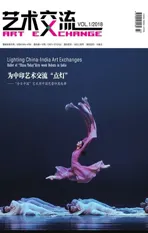讲述一段多元共生的中西文化交融的故事
——13至16世纪中国与意大利的跨文化交流
2018-07-05杨阳YANGYang
文杨阳YANG Yang
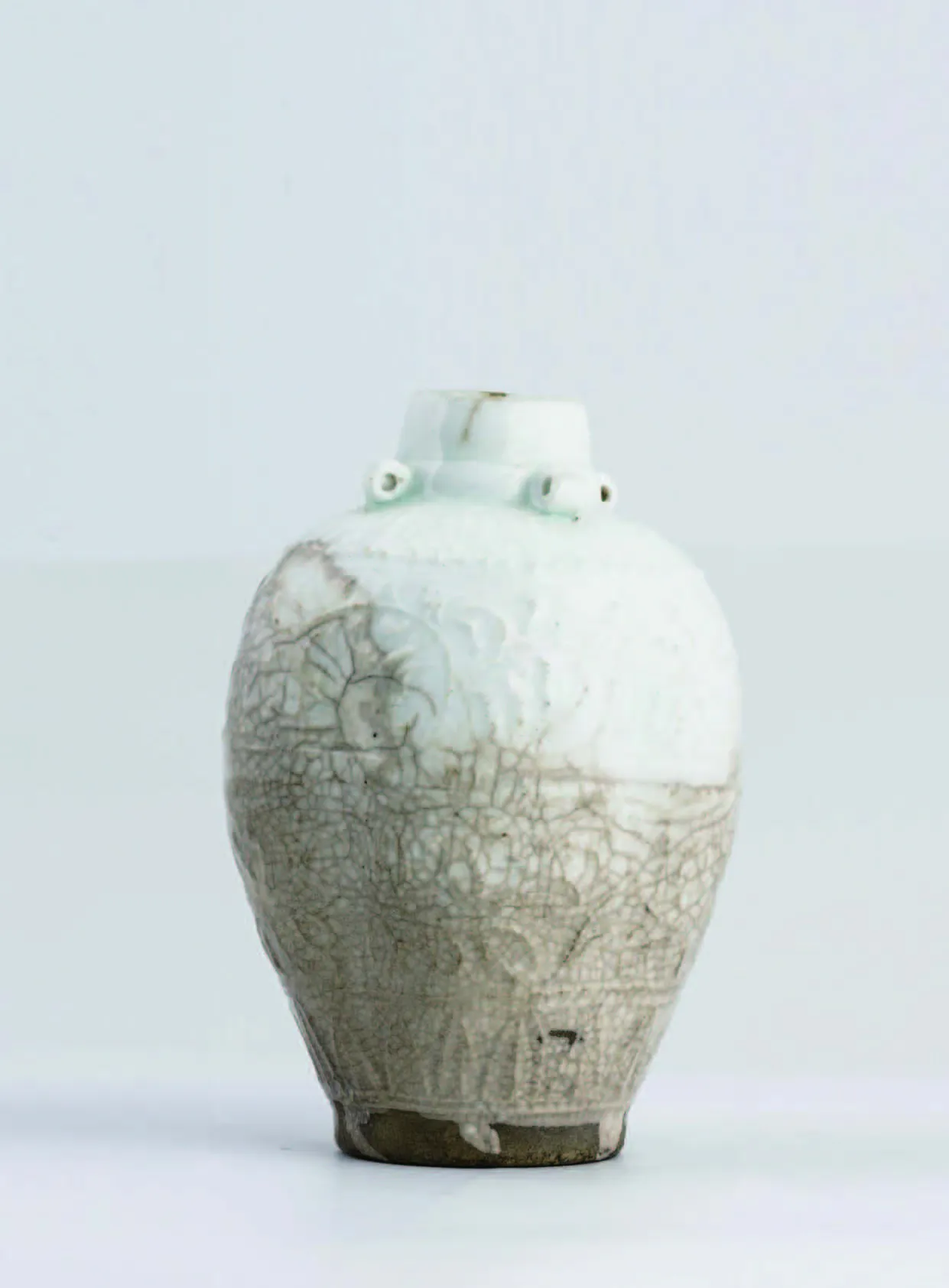
马可·波罗罐Jar of Marco Polo
意大利文艺复兴先驱之一、被誉为“欧洲绘画之父”乔托的真迹《圣史蒂芬》,枫丹白露画派的代表作之一《沐浴中的女人》,中意两国贸易文化交流的见证者“马可·波罗罐”,仿“中国制造”、用于西方外交礼物赠送的美第奇软瓷罐,纯金质地、精美华丽的“卧鹿缠枝牡丹纹金鞍饰”,荣登《如果国宝会说话》栏目而成为新晋“网红”的三星堆青铜人像,都在一个展览中得以呈现——1月27日至4月30日,湖南省博物馆2018开年原创大展“在最遥远的地方寻找故乡——13-16世纪中国与意大利的跨文化交流”展(以下简称“中意展”)以物溯源,以“从四海到七海”“指南针指向东方”“大都的日出”“马可·波罗的行囊”“来而不往非礼也”五大部分,为观众讲述一段多元共生的中西文化交融故事,带领观众体验一场跨越亚欧大陆的时空旅行,感受一次影响世界的深刻变革。
中意展聚集了来自湖南省博物馆、首都博物馆、内蒙古博物院、湖北省博物馆、广东省博物馆、中国国家博物馆等22家国内博物馆,和来自美国大都会艺术博物馆、意大利乌菲齐美术馆、意大利罗马国家博物馆等26家国外博物馆近250件(套)文物精品。本次展览的展品,或大师遗作,或精美绝伦,或意境深远,都具有极高的艺术和文化价值。
万水千山总是情。13至16世纪,中国与意大利,这两个位于亚欧大陆两端的“巨人”,都是代表着当时最高文明成就的伟大古国,虽隔洋相望,但却在悠悠千年的历程中,从茫然走向摸索,从相识逐渐相知,最终跨越千山万水,实现相遇,并在青铜、玻璃、丝绸、陶瓷等诸多历史遗存上留下了彼此文化交融的痕迹。如湖南省博物馆收藏的大量纺织品、绢地“长寿绣”丝绵袍等,都是中国乃“丝绸之国”的极好实证。随着中欧商路的打通,丝绸之路的发展,中国丝绸以奢侈品的身份,亮相世界舞台,引领罗马时尚。现藏于意大利那不勒斯国家考古博物馆、庞贝古城出土的壁画《花神芙罗拉》,虽历经岁月打磨,已使壁画显得有些陈旧,但却能清晰地看到一位身着丝绸的女子,襟飘带舞,尽显轻盈曼妙身姿。
面朝东方,情归大都。随着中国发明的指南针、罗盘的广泛应用,通往繁华富庶世界的道路被打开。在海上、陆地,各种航船商队,大批航海家探险家,都不期而同地涌入东方天堂——元大都。在15世纪中期,意大利地图学家弗拉·毛罗以惊人的准确度,绘制了一张“旧世界”地图——《弗拉·毛罗地图》。这幅直径约196厘米的圆形模式地图,涵盖了当时全部的已知世界,地图中不仅有各地山川河流的精细描绘,还有对于世界各地的详细注释,被誉为是“中世纪地图学最伟大的记载”。更为值得一提的是,在地图中左下角能清晰地看到一座体量颇大的桥梁,凌驾于河流之上,这即为永定河与卢沟桥。作为蒙元帝国和大都城地理位置重要象征的卢沟桥,不仅在《弗拉·毛罗地图》中得以描绘,《马可·波罗游记》中也有专门记述。在展品《卢沟运筏图》轴中,描绘了这座当时“独一无二”的卢沟桥上精美的石狮雕刻、数拱的桥梁设计以及水运繁忙的商贸场景。而这与马可·波罗在其《游记》中的叙述也大体一致。
跟着马可·波罗去旅行。马可·波罗是13世纪意大利著名的旅行家、商人,他借着蒙元帝国开辟的驿站交通之便,完成了纵贯欧亚大陆的往返旅程。其一生主要的成就就是自述了《马可·波罗游记》,这是欧洲人撰写的第一部详尽描绘中国的历史、文化和艺术的游记。《马可·波罗游记》自成书以后,被广为传抄、印刷,至今已有近120种文字版本。此次展出的《马可·波罗游记》抄本是书写在兽皮纸上的,是目前意大利威尼斯所保存的《马可·波罗游记》文本的最早来源。马可·波罗到底是怎样的人?他是否来过中国?展出的《马可·波罗的遗嘱》将为此提供线索。在这份遗嘱中,还详细记录了他对自己“百万身家”的安排,具体包括缴纳税款、捐赠教会、免除他人的借债,对自己妻女、鞑靼(蒙古)仆人的安排等。
在展览中,马可·波罗并不仅仅是一个人,而是指往来于亚欧大陆两端的商人、传教士和外交使节们。当“马可·波罗”们从神圣的东方国度满载而归时,行囊中装有琳琅满目的各类物品,有纹饰精美、做工精巧的丝绸;有造型精致、工艺高超的陶瓷;有画面写实、以场景描绘为主的风景画等。文化的交往是双向的。“马可·波罗”们也在中国本土留下了西方物质与艺术文化的痕迹,这些痕迹对中国文化产生了不可磨灭的影响。

花神芙罗拉 Flora
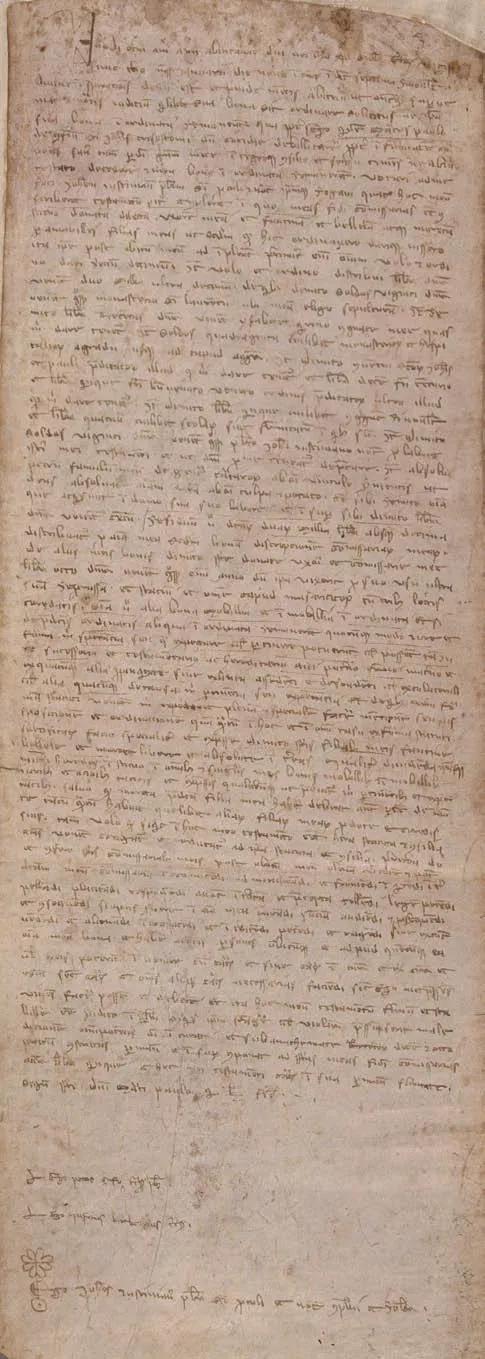
马可·波罗的遗嘱Will of Marco Polo
One of the pioneers of Italian Renaissance, known as the"Father of European Painting" Giotto's authenticSt.Stephen, one of Fontainebleau's representative worksBathing Woman, the witness of China-Italy trade and cultural exchanges "Marco Polo Jars", imitating "Made in China", Medici soft porcelain jars used as the gift in Western diplomacy, pure gold texture, beautiful and gorgeous "lying deer twig peony pattern gold saddlery," and the Sanxingdui bronze portraits,the new Internet Celebrity due to the program ofIf National Treasures Can Speakare all presented in the same exhibition—
from January 27 to April 30, Hunan Provincial Museum 2018 New Year original exhibition know as Looking for Homeland in the"Farthest Place—Intercultural Communication between China and Italy from 13thto 16thCentury" (Hereinafter referred to as"China-Italy Exhibition"), tracing the origins, telling the audiences about a multi-symbiotic story of Chinese and Western culture integration while leading them to experience a time-travel across the Asia-Europe continent and feel a profound change affecting the whole world in five major parts, From Four Seas to Seven Seas, Compass to the East, the Sunrise of Khanbaliq, Macro Polo’s Luggage, and Necessary of Reciprocation in Relationship.The China-Italy Exhibition includes nearly 250 pieces (sets) of cultural relics from 22 domestic museums, including Hunan Provincial Museum, Capital Museum, Inner Mongolia Museum,Hubei Provincial Museum, Guangdong Provincial Museum and China National Museum as well as 26 overseas museums,including Metropolitan Museum of Art, Uffizi Gallery of Italy,National Roman Museum and etc. All the exhibits, master posthumous works with extreme exquisiteness or far-reaching artistic conception, have a very high artistic and cultural value.
Love and passion never die. Between the 13thand 16thcentury,China and Italy, the two "giants" at the both ends of the Eurasian continent, represented the great ancient countries with the highest achievements of civilization at that time. Although across the ocean, in the course of millennia, from ignorance to exploration, acquaintance to gradual understanding, the two countries ultimately spanned across mountains and rivers to achieve the meticulous longing encounter, leaving a trace of their cultural blends on bronze, glass, silk, ceramics and many other historical relics. For example, the Hunan Provincial Museum collection of large quantities of textiles: "longevity embroidery"silk robe and etc., are the excellent proof that China is the "Silk State". With the opening-up of the China-EU commercial road and the development of the Silk Road, the status of Chinese silk as luxury goods appeared on the world stage and led the fashion in Rome. Now hidden in the Naples National Archaeological Museum of Italy, the ancient city of Pompeii unearthed muralFlora, although after years of grinding, the mural has become somewhat obsolete, but a woman dressed in silk is still clearly found, showing her light and graceful posture.
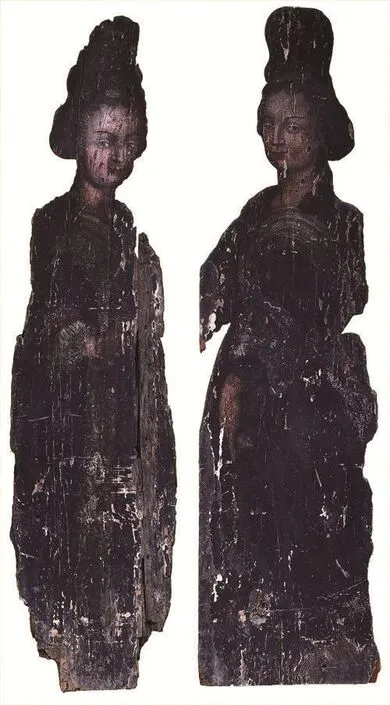
新会木美人Wooden Beauty
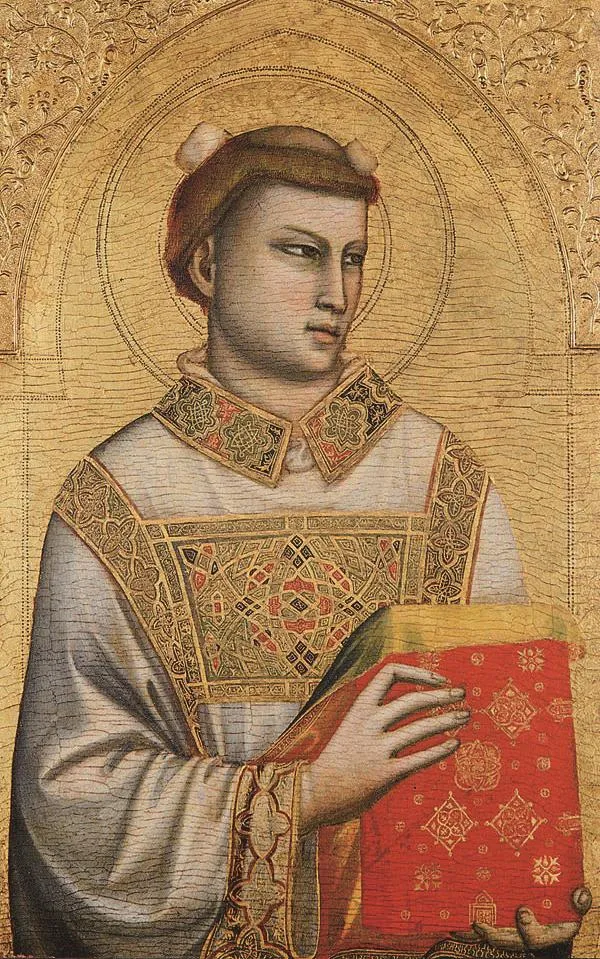
圣史蒂芬 乔托St. Stephen by Giotto
Facing the east, passion for Khanbaliq. With the wide application of compass invented in China, the road to the prosperous world was opened. In the sea and land, all kinds of shipping caravans and a large number of seafaring explorers all coincide with the influx of oriental paradise - Khanbaliq. In the mid-15th century,the Italian mapologist Fra Mauro plotted an "Old World" map- theMap of Fra Mauro- with incredible accuracy. This circular 196-centimete-diameter map covers all of the known worlds at that time, containing not only a detailed depiction of mountains and rivers, but also detailed annotations around the world,known as "the greatest record of medieval mapography". It is worth mentioning that, in the lower left corner of the map,a considerable volume of bridge over the river can be clearly found, which is the Yongding River and Lugou Bridge, an important symbol of the location of the Mongol Empire and the metropolitan capital not only portrayed in theMap of Fra Mauro,but also specifically narrated in the Travels of Marco Polo. In the scrollRafting under the Lugou Bridgeof the exhibit, the magnificent lions carved on the "Unique" Lugou Bridge, design of arches and the busy business scene of water transport were clearly depicted, which was mostly consistent with Marco Polo's narration in hisTravels.
Travel with Marco Polo. Marco Polo, a famous Italian traveler and businessman in the 13thcentury, completed the round-trip journey through Eurasia via the post-station traffic opened up by the Mongol Empire. The main achievement of his life was a recount of theTravelogue of Marco Polo, the first written by Europeans to elaborate the history, culture and art in China. Since its publication, the book has been widely circulated and printed in nearly 120 languages so far. The excerpt from theTranelogue Marco Polotranscript exhibited is written on animal skins and is the earliest source of the text ofTranelogueMarco PoloTravels currently preserved in Venice, Italy. What kind of this man is? Has he ever been to China? The exhibitionMarco Polo's Willprovides some clues, during which it also recorded his arrangements for his "millionaire family" in detail, including paying taxes, donating for churches, removing debts from other people, and arranging for his wife and daughter and the servants of Tatar (Mongolia).In the exhibition, Marco Polo is not just a man, but a merchant,missionary and diplomatic envoy to and from both ends of the Eurasian continent. When theses "Marco Polo" returned from the holy Kingdom of the East with glory, the bags contain an assortment of items, silk with beautiful decoration and exquisite workmanship; ceramics with exquisite modeling and superb technology; a realistic painting depicting the main landscape and so on. Cultural exchanges are the two-way courses. The Marco Polo also left traces of western material and artistic culture in China, creating an indelible impact on Chinese culture.
